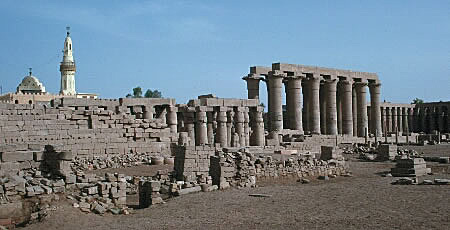The Ancient Civilizations started in Greece, Rome, and Egypt. Human energies were able to be applied to complex inventions and the arts. Around the year of 4,000 BC larger towns and cities started to appear. Two areas where early Western civilization first developed to high levels of complexity are Niles Valley of Egypt and Mesopetamia. For timber, availability was limited and was a challenge. Imported timber came from Lebanon but they still had a few local timbers. They represented lotus blossoms, palm, open papyrus flowers through their material representation. The Nile River was used for agricultural production , transportation of building materials, communication, and trade. They would also use mud on walls and bricks with a wood and stone post and beam display in their architecture. Their climate consisted of minimal rainfall with intense sunlight, and their religion consisted of life after death displayed through burials and objets in monuments, tombs, and templates. Their house spaces had reception vestibules, columned central living rooms, and bedrooms. The society was hierarchal with the kings and princes at the top followed by the priests, craftsmen's, and peasants at the bottom. Their floors were made of mud, plaster, or brick and their walls were made of plaster being applied to mud or brick, due to the intense sun they needed material that would keep them cool.The windows and doors had openwork screens, and the ceilings had a base, shaft, capital, and block with plant life inspired design. Lastly, the furniture was influenced by religions and familiar objects.

One of the most interesting ruins from this time was the Great Hypostyle Hall. The inscriptions shown on the pillars were relief sculptures. They used Hypostyle with the columns being made of sandstone.
Another amazing ruin was the Great Temple of Karnak. It was the largest and most significant religious complex in ancient history. It is amazing to see how people back then constructed pillars of this size with no advanced technology.
The country villa was also a very interesting floor pal and layout to see and learn about. It consisted of a court, porch, vestibule, reception, hall or living room, stair to the loggia, store room, and bedroom. In ancient egyptian architecture the loggia was usually on the roof top or an interior loggia facing and inner courtyard. The loggia was a hall gallery or porch open to the air on at least one side.
A modern application of egyptian design was this interior of a bedroom. I felt it was appropriate considering the gold statues accompanied by the tiled walls and animal rug.
Another interior that suited the egyptian style was also of this bedroom. There is an animal display on the back wall considering their art was influenced by prominent animals and plants. The color scheme was tan and neutrals signifying an ancient feel. Also the statue of king tut added a nice feature.
below is a link about the classical orders
https://www.youtube.com/watch?v=nrRJkzXl4a4




No comments:
Post a Comment